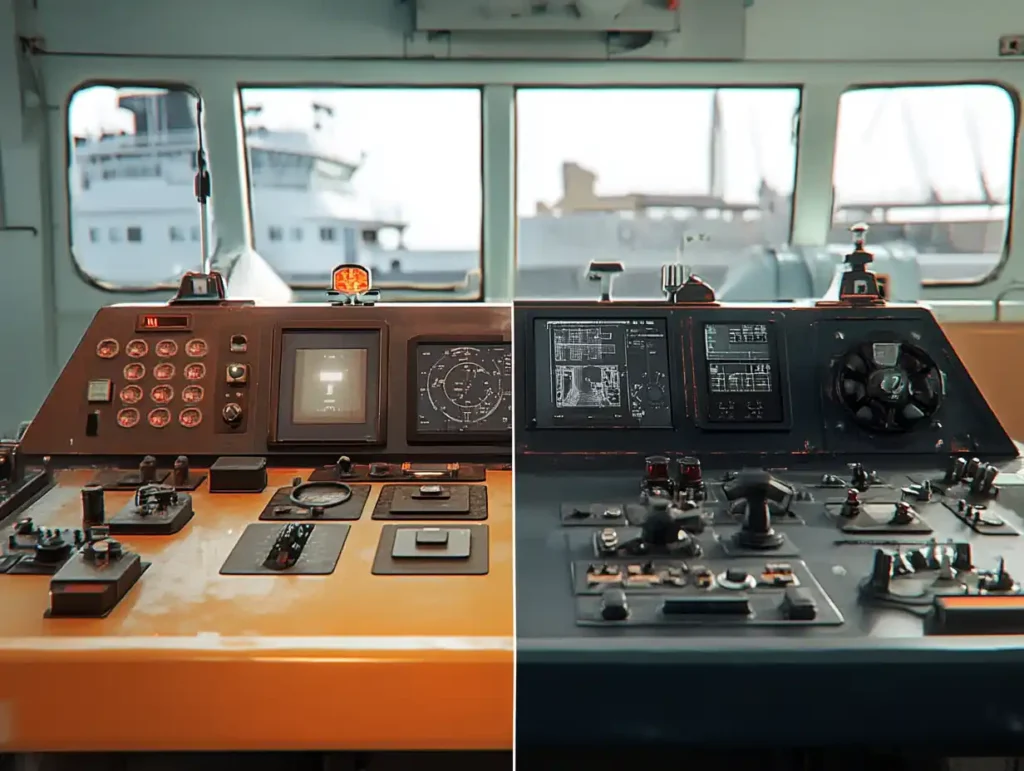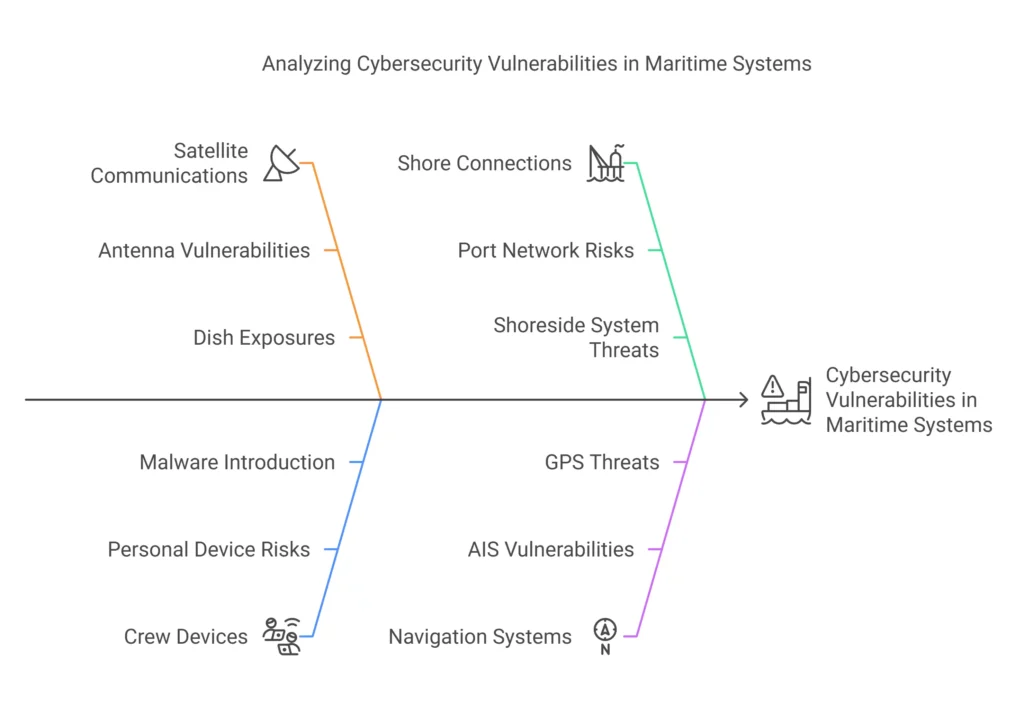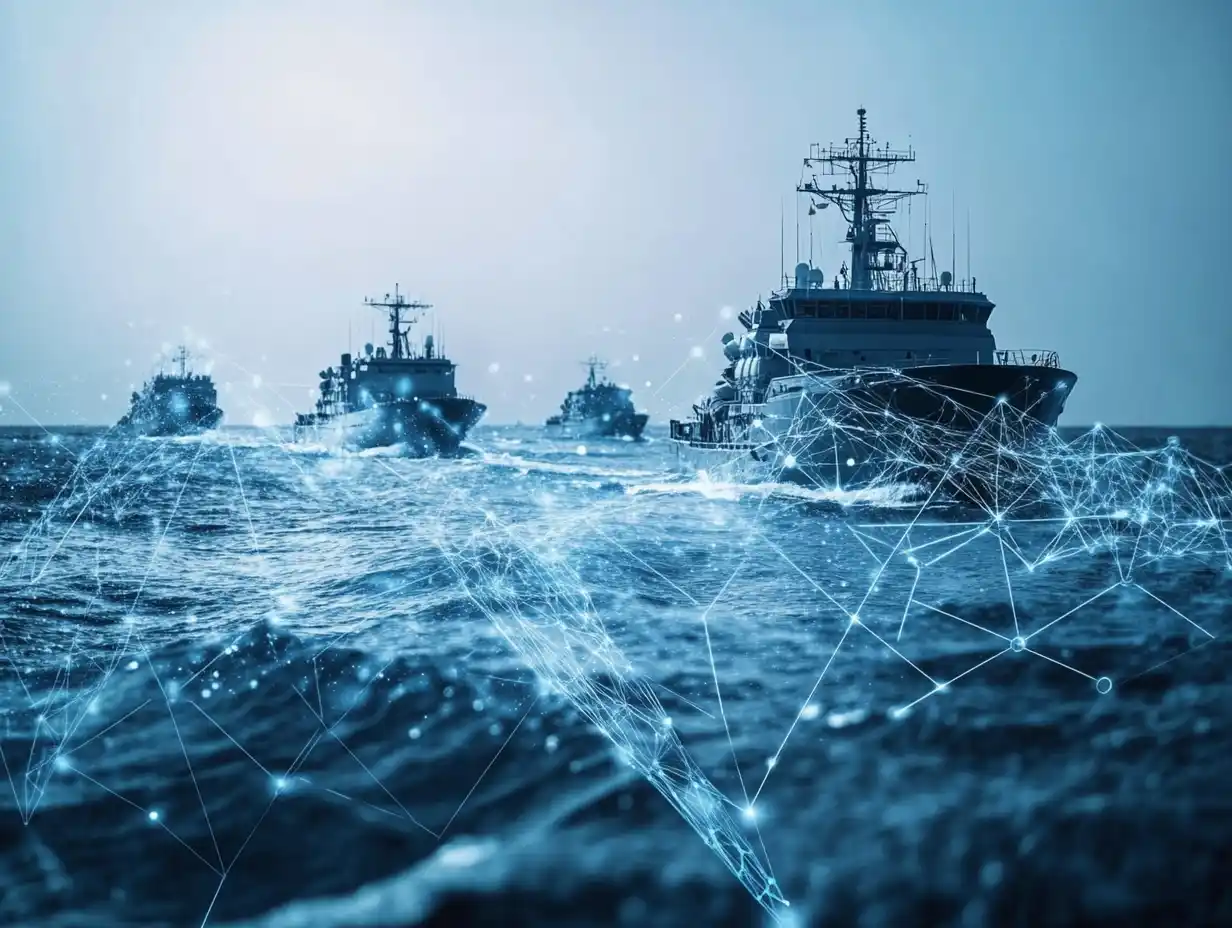The maritime industry faces unprecedented cybersecurity challenges as it embraces Maritime 4.0 technologies. Modern ships now rely on interconnected digital systems for navigation, engine control, and cargo management, creating new vulnerabilities across IT/OT convergence points. With cyber attacks against shipping increasing 300% since 2020, securing these smart ship systems has become vital for maritime safety and global trade continuity.
Maritime 4.0 and Digital Transformation Risks
Ships today look the same on the outside, but inside they’re very different from ships of the past. Modern vessels use digital twins – computer copies of the real ship that help crews solve problems before they happen. They also use artificial intelligence to find the best routes across oceans and save fuel.
Smart Ship Navigation and Cybersecurity
Not long ago, sailors used paper maps and compasses to find their way across oceans. Today, they use computer systems called ECDIS (Electronic Chart Display and Information System) that show digital maps and the ship’s location. These systems connect to satellites that tell the ship exactly where it is on Earth, but also create entry points for cyber attacks.
Smart Cargo Tracking Vulnerabilities
Modern ships don’t just transport cargo – they know exactly what they’re carrying and where each container is located. Big data systems track thousands of containers, making sure everything arrives on time and in the right place, but these connected systems expand the potential attack surface.

IT/OT Convergence Risks in Smart Ships
When ships become more connected, they also become more vulnerable to cyber attacks. Hackers can target these vessels just like they target computers on land. This is a growing problem that the shipping industry must solve.
Cybersecurity Threats in Maritime Operations
Hackers might attack ships for many reasons:
- To steal valuable information about cargo
- To take control of ship systems
- To disrupt global trade
- To demand money (ransomware)
Ships carry goods worth millions of dollars and are vital for world trade. This makes them attractive targets for cybercriminals who want to cause damage or make money through attacks.
Maritime 4.0 IT/OT Security Challenges
Ships have two types of computer systems that need protection:
- IT (Information Technology) – systems for business operations
- OT (Operational Technology) – systems that control the ship itself
When these systems connect (called IT/OT convergence), new security risks appear. A hacker who breaks into the email system might find ways to reach the engine controls or navigation systems.
Interconnected Ship System Vulnerabilities
The risks to ships aren’t just theoretical – real attacks have already happened.
GPS Spoofing and Smart Navigation Risks
Hackers can send fake GPS signals to ships, making them think they’re in a different location. This is called “spoofing” and can lead ships off course. In 2017, multiple ships in the Black Sea reported their navigation systems showed them miles away from their actual positions.
Cybersecurity Threats to Shipping Operations
Major shipping companies have faced ransomware attacks that locked their computer systems. In 2017, the shipping giant Maersk was hit by an attack that cost over $300 million in damages and disrupted global shipping for weeks.

Securing Operational Technology in Maritime
The maritime industry is working on solutions to keep ships safe from cyber attacks. Here are some important steps being taken:
Protecting Maritime Operational Technology
The most important systems to protect are those that control the ship itself. These operational technology systems need special security measures because they weren’t originally designed with cybersecurity in mind.
Human Factors in Maritime Cybersecurity
Ships can have the best technology, but if a crew member clicks on a dangerous email link, hackers can still get in. Training sailors to recognize cyber threats is just as important as installing security software.
Maritime 4.0 Regulatory Compliance
The International Maritime Organization (IMO) has created rules requiring ship companies to address cyber risks. Since January 2021, ships must include cybersecurity in their safety management systems.
Smart Shipping Security Future
As ships become more automated and even autonomous (self-driving), cybersecurity will become even more critical. The future of maritime security will involve:
AI for Maritime Cybersecurity
Just as AI helps ships find efficient routes, it can also help spot unusual activities that might be cyber attacks. AI systems can monitor ship networks 24/7 and alert crews to potential threats.
Secure-by-Design Smart Ship Systems
Future ships will have security built into their systems from the beginning, rather than added later. This “secure-by-design” approach makes vessels much harder to hack.
Sailing into a Secure Digital Future
Maritime 4.0 brings exciting new technologies to the shipping industry, making vessels more efficient, environmentally friendly, and easier to operate. But with these benefits come new risks that must be managed.
By understanding the cybersecurity challenges and taking steps to address them, the maritime industry can safely navigate the digital waters ahead. Protecting ships from cyber threats isn’t just about technology—it requires trained people, good procedures, and international cooperation.
As ships continue to evolve with more technology and connectivity, cybersecurity will remain at the heart of safe, reliable maritime operations. The future of shipping depends on getting this balance right between innovation and security.


Leave a Reply